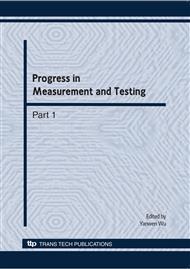[1]
Leung F H F, Lam H K, Ling S H,et a1. Tuning of the Structure and Parameters of a Neural Network Using an Improved Genetic Algorithm[J]. IEEE Transactions on Neural Networks, 2003, 14(1).
DOI: 10.1109/tnn.2002.804317
Google Scholar
[2]
Yao X. Evolving artificial neural networks[J]. Proc of the IEEE, 1999, 87(9): 1423-1447.
Google Scholar
[3]
D. Goldberg and R. Lingle, Alleles, loci and the traveling salesman problem, in Proc. of the first International Conference on Genetic Algorithm, Lawrence Erlbaum, Hillsdale, NJ, 1985, pp.154-159.
Google Scholar
[4]
M. Gen and R. Cheng, Genetic Algorithms and Engineering Design, Wiley, New York, (1997).
Google Scholar
[5]
W.M. Spears, Adapting crossover in evolutionary algorithms, in Proc. of 4th Annu. Conf. on Evolutionary Computing, Ed Fogel, MIT Press, Cambridge, MA, (1995).
Google Scholar
[6]
M. Srinivas and L.M. Patnaik, Adaptive probabilities of crossover and mutation in genetic algorithms, IEEE Trans. Systems, Man Cybernet. vol. 24, no. 4, pp.656-667, (1994).
DOI: 10.1109/21.286385
Google Scholar
[7]
Eshelman L , Schaffer J. Real-coded genetic algorithms and interval-schema[J]. Whitley D ed. Foundations of Genetic Algorithms 2. SanMateo: Morgan Kaufmann Publishers, 1992: 187-202.
DOI: 10.1016/b978-0-08-094832-4.50018-0
Google Scholar
[8]
Eric I Chang,Richard P Lippmann.Using genetic algorithms to improve pattern classification performance . Proceedings of the 1990 Conference on advances in neural information processing systems 3[C].Denver,Colorado,United States.797-803.
Google Scholar
[9]
LI Bing, XIE Jian-ying. Research on Self-adaptive Generation Gap Substitute Policy of Genetic Algorithm. Control Theory and Application, 2001, 18(1): pp.41-44.
Google Scholar
[10]
TANG Wan-mei. The Study of the Optimal Structure of BP Neural Network. System Engineering Theory and Practice, 2005, 25(10): pp.96-100.
Google Scholar


